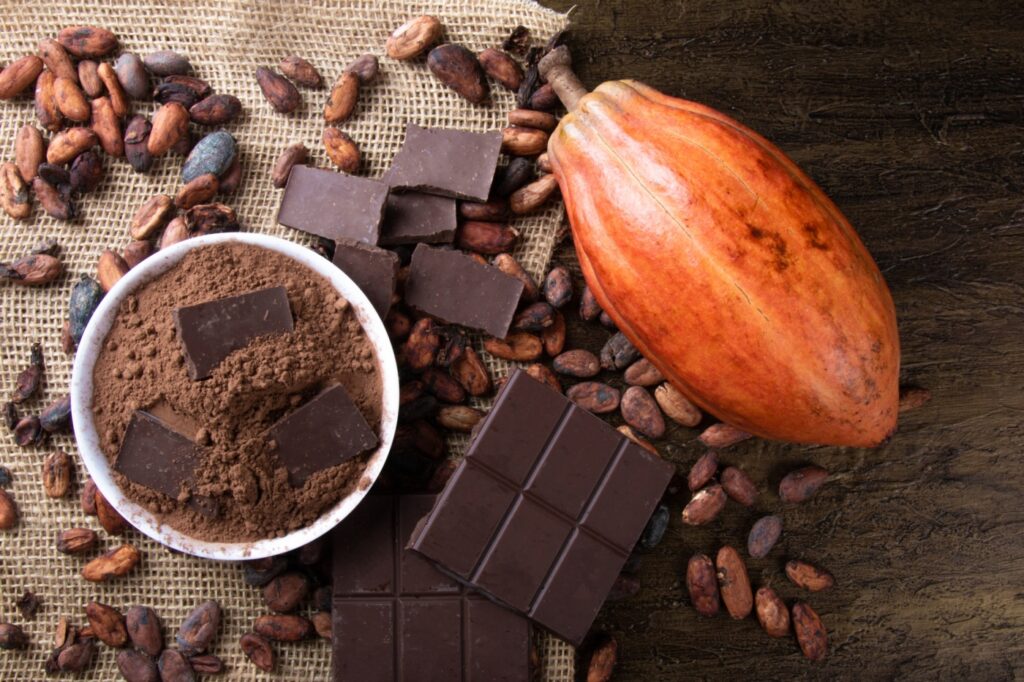
During a recent trip to your local grocery or big box store, you might have noticed the shelves already fully stocked for Valentine’s Day. It seems that as soon as winter holiday items are cleared out, pink and red boxes of chocolates take over the seasonal section.
While chocolate is a popular traditional Valentine’s Day gift, science reveals that this sweet treat offers some unique health benefits, too.
Chocolate was first enjoyed as a beverage made from the pulp of the cacao fruit well over three thousand years ago in present-day Mexico. While the first mention of Valentine’s Day as a romantic holiday goes back to the 14th century, it wasn’t until the 19th century when Valentine’s Day emerged as a commercial holiday. New technology that transformed the production of chocolate, along with increased availability and affordability of sugar, are significant reasons for the rise of chocolate as a Valentine’s Day staple.
Chocolate is derived from the fruit of the Theobroma cacao, a tropical tree. The fruit from this tree is about the size of a papaya. These fruit are full of about 50 seeds, or beans, covered in white pulp. These seeds go through a fermentation process where they develop their familiar chocolate flavor and aroma. Next, the seeds are roasted and processed in order to create nibs. The nibs go on to be turned into chocolate liquor. Finally, other ingredients such as sugar, milk, cocoa butter and vanilla are added to chocolate liquor towards the end of this long and laborious process, determining the type and quality of chocolate produced.
The health benefits of chocolate come from the cacao beans specifically so it only makes sense that chocolate with a greater percentage of cacao is the healthiest choice. In fact, white chocolate isn’t actually chocolate because it is void of any cacao particles. Cacao beans are loaded with antioxidant phytonutrients as well as iron, copper, magnesium, phosphorus and zinc.
A study published in the journal Nutrients found that moderate chocolate consumption up to three times per week was associated with benefits in heart disease and stroke reduction. Chocolate was found to be protective against diabetes when consuming two to six servings per week. A serving is the equivalent of one ounce of chocolate.
Additional studies have found associations between chocolate and cognitive function, especially related to decreased risk of cognitive decline in older people. It also appears that chocolate can improve mood in some people; however, it is unclear if these effects are due to taste and smell or chocolate’s interaction with human neurotransmitters.
Related Articles
6 tips to create good nutritional habits for healthy aging
4 tips to help you enjoy an alcohol-free Dry January
Whether you are purchasing chocolate for your loved one or yourself, look for chocolate with 70% cacao content or higher. Choose chocolate with cacao beans listed as the first ingredient while steering away from products with partially hydrogenated oils and lots of added sugar. Finally, chocolate that is labeled fair-trade and organic is more likely to be ethically sourced, high-quality and free from pesticides.
While a scientific understanding of the health benefits of chocolate is still unfolding, it certainly appears that chocolate can be part of a health-promoting and balanced diet. In fact, there’s no need to wait until Valentine’s Day to enjoy chocolate when you are choosing your chocolate wisely.
LeeAnn Weintraub, MPH, RD is a registered dietitian, providing nutrition counseling and consulting to individuals, families and organizations. She can be reached by email at RD@halfacup.com.
